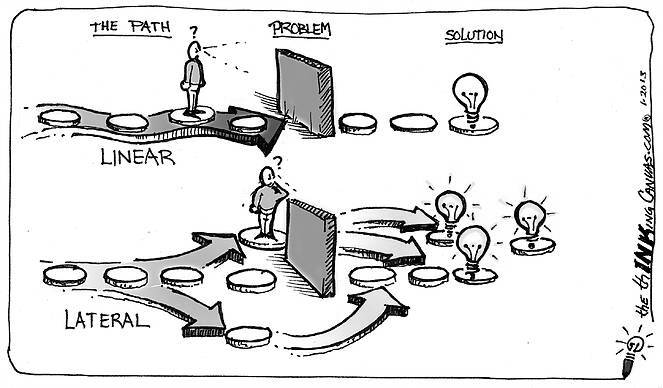Introduction
In our complex and dynamic world, decision making is often challenging. Traditional approaches may not always yield optimal outcomes. This is where the concept of Lateral Thinking comes into play. Lateral Thinking, coined by Edward de Bono, refers to a non-linear and creative approach to problem-solving that involves looking at situations from different angles and exploring unconventional solutions. This mental model encourages individuals to break free from rigid patterns of thinking and embrace innovative possibilities. In this blog post, we will delve into the concept of Lateral Thinking, its relevance in decision making, and how it influences our day-to-day lives.
The Psychology behind Lateral Thinking
Lateral Thinking is deeply rooted in human psychology. Our brains are naturally inclined to seek familiar patterns and rely on past experiences to make sense of the world. While this cognitive tendency has its advantages, it can also limit our ability to think outside the box. Lateral Thinking challenges this pattern-seeking behavior by encouraging the exploration of alternative perspectives, connections, and possibilities.
Prevalence of Lateral Thinking in Various Contexts
- Personal Life Decisions: Imagine an individual who has been working in the same career for years but feels unfulfilled. Instead of resorting to conventional thinking that suggests sticking to the familiar, Lateral Thinking prompts them to explore alternative career paths, pursue their passions, or embark on entrepreneurial ventures. By adopting a lateral mindset, individuals can break free from the constraints of their current circumstances and unlock new opportunities for personal growth and happiness.
- Business Scenarios: In the corporate world, organizations that embrace Lateral Thinking are more likely to stay ahead of the curve. For example, consider a company facing declining sales in a saturated market. Instead of resorting to conventional marketing strategies, Lateral Thinking encourages the exploration of unique value propositions, disruptive business models, or partnerships with unexpected industries. By challenging existing assumptions and embracing creative solutions, organizations can innovate and maintain a competitive edge.
- Public Policy-Making: Lateral Thinking is also applicable in the realm of public policy. When policymakers face complex social issues, traditional approaches may fall short. Lateral Thinking prompts policymakers to consider unconventional solutions that address the root causes of problems. For instance, rather than solely focusing on punitive measures to reduce crime rates, policymakers might explore innovative social programs that address the underlying socioeconomic factors contributing to criminal behavior.
Mental Biases and Psychological Underpinnings
Several mental biases can hinder Lateral Thinking and lead individuals to make irrational decisions. These include:
- Confirmation Bias: This bias leads individuals to seek information that confirms their existing beliefs or assumptions, disregarding alternative viewpoints. Confirmation bias restricts the exploration of fresh perspectives, hindering Lateral Thinking.
- Anchoring Bias: Anchoring bias causes individuals to rely heavily on initial information or ideas and insufficiently explore alternative possibilities. By fixating on a single anchor point, individuals may overlook more innovative and effective solutions.
- Status Quo Bias: The status quo bias favors maintaining existing conditions rather than embracing change. This bias inhibits Lateral Thinking by discouraging individuals from exploring new approaches or challenging established norms.
Strategies for Embracing Lateral Thinking
- Embrace Creativity Techniques: Familiarize yourself with various creativity techniques such as brainstorming, mind mapping, random word association, and reverse thinking. These techniques can stimulate novel ideas and break through mental barriers.
- Seek Diverse Perspectives: Engage in discussions and collaborations with individuals from different backgrounds and disciplines. Diversity of thought can foster Lateral Thinking by exposing you to alternative viewpoints and expanding your range of ideas.
- Embrace Constraints as Opportunities: Instead of viewing constraints as limitations, see them as opportunities to think creatively. Constraints can fuel innovation by forcing you to find unique solutions within given limitations.
- Challenge Assumptions: Question your assumptions and challenge the status quo. Actively seek out alternative viewpoints and explore unconventional possibilities. By questioning established norms, you open yourself up to new perspectives and innovative solutions.
Conclusion
Lateral Thinking is a powerful mental model that encourages us to step out of our comfort zones and explore new avenues for decision making. By breaking free from traditional thought patterns and embracing creativity and innovation, we can uncover unique solutions to complex problems. However, it is important to be aware of the mental biases that can hinder Lateral Thinking and actively work to overcome them. By embracing diverse perspectives, challenging assumptions, and adopting creativity techniques, we can tap into the full potential of Lateral Thinking and make better decisions in all aspects of life.
